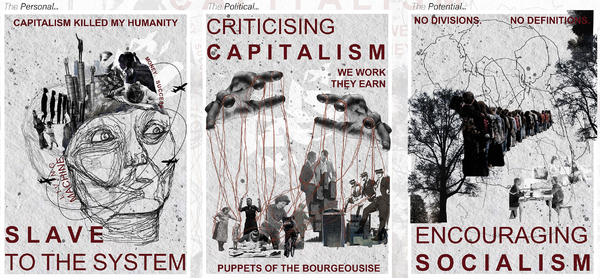A Factory of Growth
Creating a community ‘Without the pollution of powerful interests and inequalities.’ (2015:82)
The Mushroom at the End of the World by Anna Sing
The Feminist Factory of Growth stems from a socialist stance on gaining independence from capitalist society- ruled by patriarchy and social status. The scheme emerged from personal and political narratives; regarding social class, status, and intersectionality, as well as the aspiration to create greener, biodiverse spaces. The proposal aims to dismantle societal expectations, through the juxtaposition of a collaborative open, and intimate environment. This feminist design is driven by the people. It is driven by individual feelings and experiences. The Factory of Growth consists of a multifaceted program focused on growing, selling, and learning allowing for a constant sharing of cultures and skills, where everyone can reflect on being individual humans and not “slaves to the system”.
Growing: The space increases biodiversity and facilitates the sourcing of natural produce. Growth is also encouraged in the building through learning about nature and intersectional lifestyles.
Selling: The Market place allows individuals to gain independence by developing small businesses, and creating a local economy and community.
Learning: Two approaches to learning include doing and listening. The actors are able to emerge themselves into the growing process and natural production. Additionally, they are also able to understand the views and perspectives of others in the classrooms of growth.
All these spaces gather into one collaborative fluid environment, built on interactivity and multi-functionality. The spaces neither have exact definitions nor divisions. The factory is a space where the actors are not defined by their status and only have a common goal: Growth. Throughout the masterplan and design there is a constant ‘tackling of structural homologies’ (Grusen, 2017:6), through biodiversity/ planting and immersive arrangements. Furthermore, battling a capitalist society allows the building to encourage environmental, social, and economic sustainability. Passive strategies and an increase in nature, work together to provide healthy environments interconnected with people. The design strives to reduce inequality, enhance solidarity, and foster growth.


